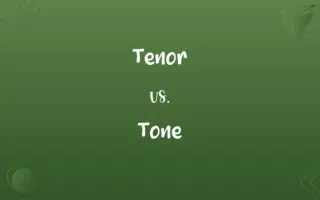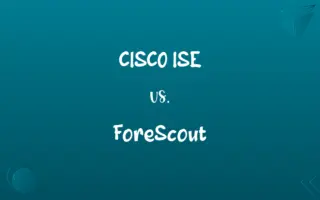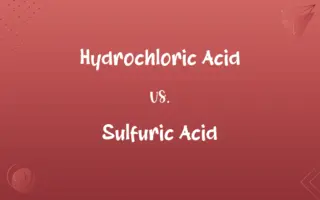Caulk vs. Silicone: Know the Difference
Caulk is a general term for sealants, often paintable and used for gaps, while silicone is a specific, flexible, waterproof sealant type.
Key Differences
Caulk is a broad term for various sealants, including latex, acrylic, and butyl rubber. Silicone is a specific type of sealant, made from silicone polymers, known for its flexibility and water resistance.
Caulk is ideal for filling gaps, cracks, and joints in areas like window frames and baseboards, often paintable. Silicone is best suited for areas requiring waterproof seals, such as bathrooms and kitchens, not typically paintable.
Caulk is varies in durability depending on the type; less flexible than silicone, may shrink or crack over time. Silicone is highly durable and retains flexibility, resistant to shrinking and cracking, performs well in varying temperatures.
Caulk is generally easier to apply and clean up, can be smoothed with water or a wet finger. Silicone is more challenging to apply neatly, requires mineral spirits for cleanup, not as easy to shape once applied.
Caulk is usually less expensive than silicone, widely available in various formulations for different applications. Silicone is tends to be more expensive, available in specialized formulations for high-temperature or specific uses.
ADVERTISEMENT
Comparison Chart
Composition
Various types including latex, acrylic, butyl rubber
Made from silicone polymers
Applications
Ideal for gaps, cracks in window frames, baseboards
Best for waterproof areas like bathrooms, kitchens
Durability
Varies, less flexible, may shrink or crack
Highly durable, flexible, temperature resistant
Ease of Use
Easier to apply and clean, water-soluble
Trickier to apply, requires mineral spirits to clean
Cost
Generally less expensive, widely available
More expensive, specialized formulations
ADVERTISEMENT
Caulk and Silicone Definitions
Caulk
A waterproof filler and sealant used in building work and repairs.
He used caulk to seal the gap between the bathtub and the floor.
Silicone
A compound used in sealants, adhesives, lubricants, medicine, cooking utensils, and thermal and electrical insulation.
The electrician used silicone insulation for the wiring.
Caulk
A substance used to fill cracks or gaps in surfaces.
Caulk was applied to the window edges to prevent drafts.
Silicone
A synthetic material made from silicon, oxygen, carbon, and hydrogen, used in a wide range of applications.
The kitchen utensils were made of heat-resistant silicone.
Caulk
A material used to make something watertight or airtight.
The plumber caulked around the pipes to prevent leaks.
ADVERTISEMENT
Silicone
A rubber-like material used for its resistance to extreme temperatures and water.
Silicone sealant was used around the shower to prevent water damage.
Caulk
A sealing compound used to fill joints and seams.
Caulk was used to seal the joints in the wooden deck.
Silicone
A flexible, inert material often used in medical devices and implants.
The surgeon used a silicone implant in the reconstructive surgery.
Caulk
A flexible material used to close up gaps in building materials.
Caulk was applied to the cracks in the walls before painting.
Silicone
A heat-resistant and rubbery polymer used in various consumer products.
The baking mat was made of food-grade silicone.
Caulk
To make watertight or airtight by filling or sealing
Caulk a pipe joint.
Caulked the cracks between the boards with mud.
Silicone
Any of a large group of oligomers and polymers based on the structural unit R2SiO, where R is an organic group, characterized by wide-range thermal stability, high lubricity, extreme water repellence, and physiological inertness and used in adhesives, lubricants, protective coatings, paints, electrical insulation, synthetic rubber, and prosthetic replacements for body parts.
Caulk
(Nautical) To make (a boat) watertight by packing seams with a waterproof material, such as oakum or pitch.
Silicone
(chemistry) Any of a class of inert, semi-inorganic polymeric compounds (polysiloxanes), that have a wide range of thermal stability and extreme water repellence, used in a very wide range of industrial applications, and in prosthetic replacements for body parts.
Caulk
To apply caulking
Caulked all around the window frame.
Silicone
(transitive) To join or treat (something) with a silicone-based product.
Silicone the bathtub to the tile
Caulk
Caulking.
Silicone
To enhance or reconstruct (a body part) with a prosthesis containing silicone.
Caulk
Caulking.
Silicone
Any of a large class of siloxanes that are unusually stable over a wide range of temperatures; used in lubricants and adhesives and coatings and synthetic rubber and electrical insulation
Caulk
A composition of vehicle and pigment used at ambient temperatures for filling/sealing joints or junctures, that remains elastic for an extended period of time after application.
Caulk
(nautical) To drive oakum into the seams of a ship's wooden deck or hull to make it watertight.
Caulk
To apply caulking to joints, cracks, or a juncture of different materials.
Caulk
(slang) fuck
Caulk
To fill in the seams or cracks of, with a waterproof material such as caulk.
Caulk
See Calk.
Caulk
A viscous semisolid material of varying composition used to fill in seams of objects which are exposed to water, such as wooden ships or bath tiles; - called also calk and caulking. After applying in a semisolid form, the material hardens and dries to form a waterproof seal. It is used in the process of caulking. It is sometimes applied together with a rope-like cord to fill larger seams.
Caulk
Seal with caulking;
Caulk the window
Repeatedly Asked Queries
How long does caulk take to dry?
Typically 24 hours, varying by type.
Can caulk be painted over?
Yes, most types, except silicone-based caulk.
Is silicone waterproof?
Yes, silicone is highly water-resistant.
Is caulk toxic?
Some types can be before curing; ventilation is recommended during application.
What is caulk primarily used for?
Sealing gaps in buildings and construction.
Is silicone suitable for outdoor use?
Yes, due to its weather-resistant properties.
Is silicone safe for kitchen use?
Yes, food-grade silicone is safe.
Does silicone age or deteriorate?
It's very durable but can degrade over many years.
How do I remove old caulk?
With a caulk remover tool or solvent.
What’s the best caulk for windows?
Latex or acrylic caulk is often recommended.
Can caulk be used to fill large gaps?
It's best for smaller gaps; larger ones may require backing material.
Can silicone only be used in bathrooms?
No, it's versatile but excels in moist environments.
Can I apply new silicone over old silicone?
It's best to remove old silicone first for better adhesion.
Can silicone be used on all surfaces?
Most, but it may not adhere well to some.
Can I use caulk in a high-moisture area?
Yes, but silicone is better for constant water exposure.
What's the difference in cost between caulk and silicone?
Caulk is generally cheaper than silicone.
Is caulk or silicone better for energy efficiency?
Both can improve energy efficiency by sealing gaps.
Does silicone have a smell?
It can have a vinegar-like smell when curing.
Is silicone caulk paintable?
No, it typically doesn't adhere to paint.
Does silicone shrink as it dries?
No, it maintains its size and shape.
Share this page
Link for your blog / website
HTML
Link to share via messenger






































































